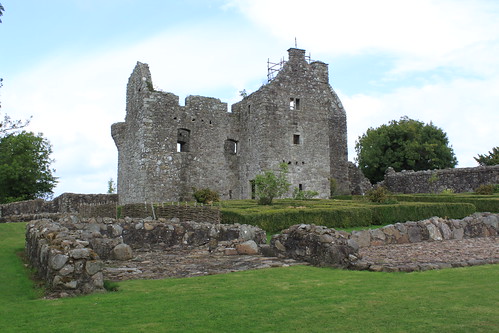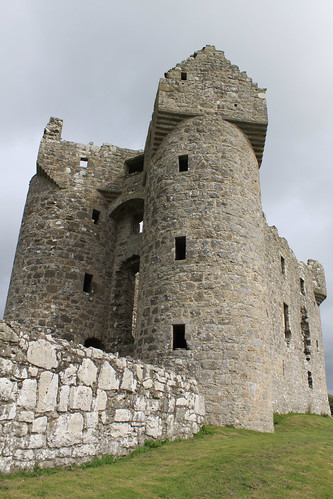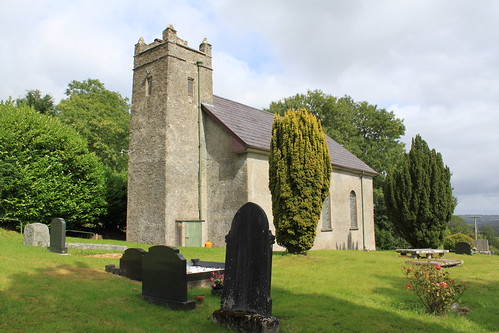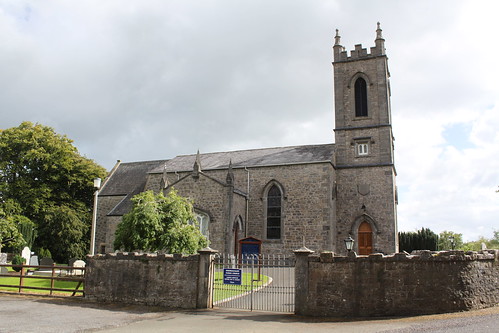In the past, I've been to Enniskillen a few times and stayed at the Share Centre in Lisnaskea, so decided that Lower Lough Erne would be my destination for this trip. In terms of geographical oddities, Northern Ireland is full of them - the Upper Bann section of the river is 'lower' on the map than the Lower Bann river (because it flows northwards from the Mournes to Lough Neagh, then on to Coleraine); and similarly, Lower Lough Erne is the more northerly of the two Lough Erne portions.
I was on new territory for most of the day, finding new parts of the country to which I will certainly return again. And here's some of what I found on the way.
One of my interests is Irish history, and there's a wealth of history deep in the Fermanagh countryside. While Enniskillen and Crom Castles may get all the credit and visitors, they're not the only Fermanagh fortifications. Tully Castle, on the shores of the Lough has a great garden laid out in front of it (and a walk round by the Lough):

Monea Castle may well be my favourite though. One of the Plantation castles, the ruins still stand despite its turbulent history in the 1600's.

Another of my photographic interests is to capture photos of Church of Ireland parish churches. I'm slowly building my collections on Flickr (see Down & Dromore, Connor, Armagh, Clogher, Derry & Raphoe among others). My little trip through south west Fermanagh (with a short incursion into County Cavan) helped get a few more photos from both Kilmore Diocese as well as Clogher. Just a small sample, here are Boho and Inishmacsaint:


The most surprising part of my day came on the return leg, along the north shore of Lough Erne. Tucked away in the little Irvinestown was something I didn't expect to see. This:

A Great War Cross of Sacrifice. I've previously found these in the City Cemetery, Dundonald Cemetery, Carnmoney Cemetery, Milltown Cemetery (!) and in Dundee. They are all the same, commemorating the soldiers who died during the First World War (also known as the Great War). As Graeme has informed me, they were erected by the Commonwealth War Graves Commission in any cemetery with more than forty war graves. There are plenty in Irvinestown, both beside the cross itself, and also around the back of the church.
All the Great War Cross of Sacrifice crosses I had found up to now had been in and around Belfast. There's one in Irvinestown. Any more in out of the way places in the Northern Irish countryside?
No comments:
Post a Comment